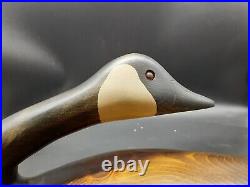

Web tags are small markers etched with letters and numbers. Despite their somewhat cumbersome appearance, nasal saddles and discs do not seem to adversely affect the survival of birds wearing them. These markers have been extremely useful in studying local movements, fidelity to nesting and wintering areas, survival, and behavior. Nasal discs, small plastic markers of various colors and shapes, are similarly attached on either side of the bill. These markers are often inscribed with unique codes and come in various color combinations.

Nasal saddles fit over the bill and are attached with a metal rod through the nares (nostrils). Nasal saddles and discs are auxiliary markers frequently used on ducks. Colored leg bands are larger than metal bands, so they too can be read from long distances. Like neck bands, these markers are made of plastic, come in a variety of color combinations, and are inscribed with unique codes. As a result, colored leg bands have gained favor among biologists in recent years. In addition, under certain weather conditions ice can collect on neck bands, with potentially deadly consequences for waterfowl. Some research suggests that neck bands may adversely influence the survival of marked waterfowl because hunters are able to identify and selectively harvest birds that are wearing them. You might just find that it's carrying an auxiliary marker. The next time you harvest a duck or goose, take a moment to thoroughly examine the bird inside and out. Auxiliary markers can be placed on a bird's bill, feet, legs, neck, and back, and can even be implanted internally (in the case of some transmitters). These markers allow individual birds to be identified not only in hand but also from a distance. This information has helped protect vulnerable migrant Canada goose populations while maximizing harvest opportunity on overabundant resident populations.Īuxiliary Markers Researchers often use auxiliary markers in addition to standard metal leg bands.

These markers have played a key role in determining when Arctic-nesting Canada geese arrive on staging and wintering areas. Neck bands have been used extensively to delineate goose and swan populations, study the birds' movements and distribution, and estimate survival and population size. Neck bands can be easily read from long distances with spotting scopes or binoculars, allowing each marker to be observed many times across broad geographic areas during a bird's lifetime. For example, in Missouri we were issued white neck bands with black codes for use in our giant Canada goose research. Different color combinations represent various regions in which birds are marked. These bands are made of plastic or flexible vinyl and encrypted with unique alphanumeric codes. Neck bands are a type of auxiliary marker often used in conjunction with leg bands on geese and swans. All this information helps waterfowl managers set hunting seasons and bag limits each year to support healthy waterfowl populations. Moreover, band recovery data can be used to estimate age-, sex-, and species-specific survival harvest rates and derivation crippling losses recovery rates and band reporting rates. Band recoveries can also show biologists how the waterfowl harvest is distributed throughout states, flyways, or the continent. By plotting banding sites on northern breeding areas as well as the points where hunters harvested banded birds derived from those locations, biologists were able to delineate the four major waterfowl flyways that span North America. One of the earliest objectives of waterfowl banding research was to assist in discovering the migration routes followed by ducks and geese. On average about 350,000 waterfowl are leg banded each year, and around 85,000 are recovered and reported. Each band is inscribed with a unique eight- or nine-digit number, and the last number of the prefix indicates the band size.

Most of today's leg bands are made of aluminum and vary in size according to waterfowl species. People have been banding birds for centuries in Europe, and the first large-scale North American banding program was established in 1922. When most hunters think about waterfowl markers, shiny metal leg bands immediately come to mind. Thus shooting a banded bird is a rare and special event indeed. Later in life, I learned that only a small number of waterfowl are banded and that an even smaller number of those birds are harvested. Being young I didn't understand all the hullabaloo that my father and his friends made over the occasion. My waterfowling career had a storybook beginning-the first Canada goose I ever shot on Wisconsin's famed Horicon Marsh was wearing a leg band, and that band still adorns my lanyard today.


 0 kommentar(er)
0 kommentar(er)
